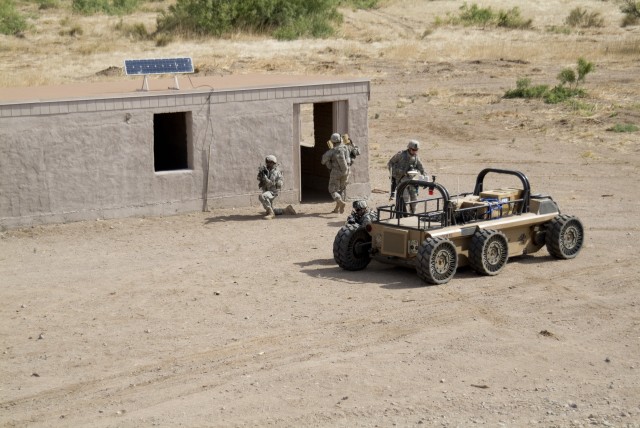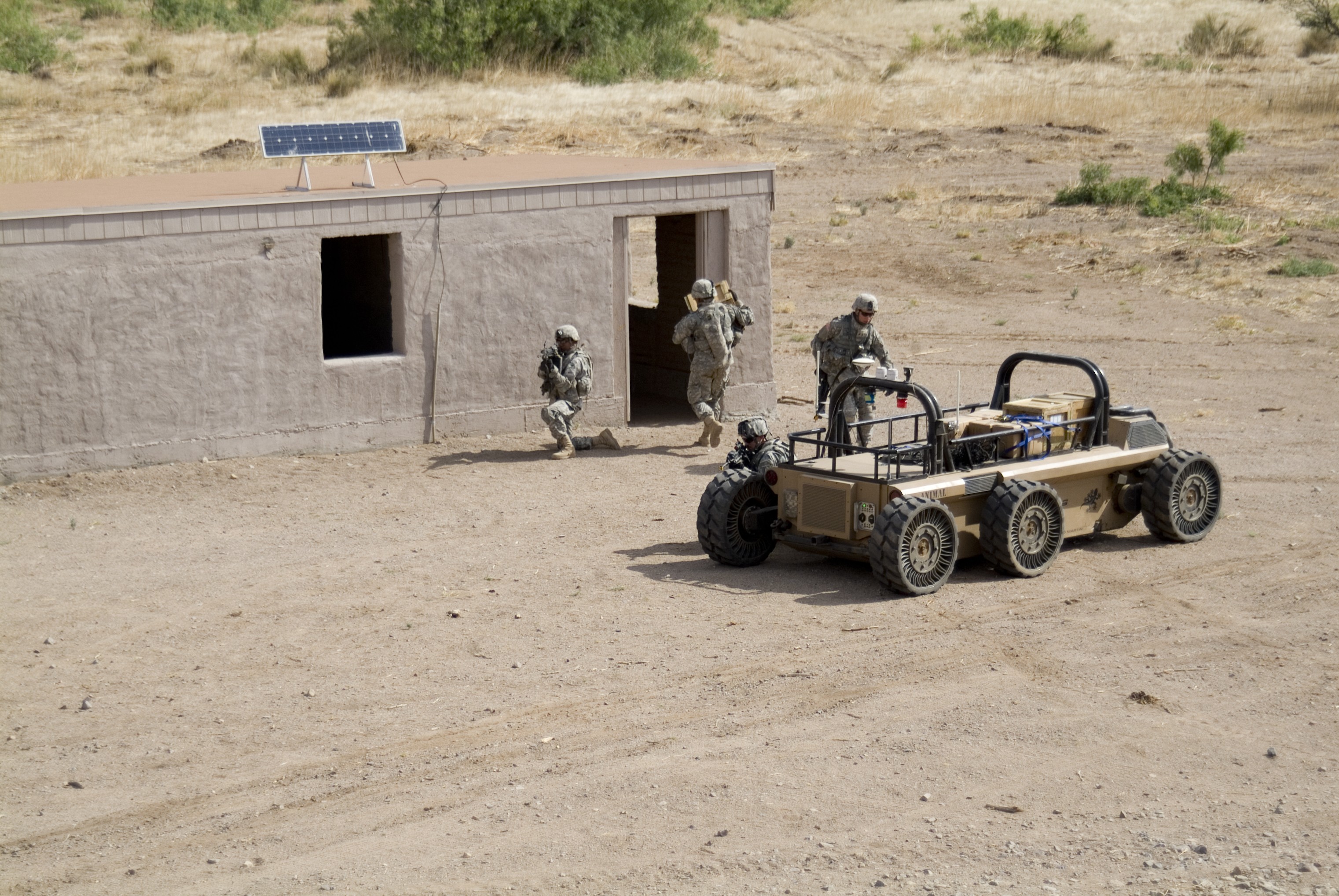
Though Future Combat Systems is changing its name and focus, testing of FCS systems will continue on White Sands Missile Range.
According to Paul Mehney, associate director of Public Communications for FCS, in accordance with guidance from the Secretary of Defense, the FCS program will transition to an Army Brigade Combat Team Modernization effort. While this change means the end of the development of the FCS BCT, it instead means that all 73 of the Army's BCTs, including both regular units and National Guard, will be provided with new enhanced capabilities developed by the FCS program. "The tests that are taking place at WSMR and Fort Bliss are now directly supporting the effort to field the early equipment sets to all BCTs," Mehney said. While the development of the FCS family manned ground vehicles has been halted, including the Non Line of Sight Cannon system that had begun testing and evaluation at WSMR, many of the other systems including unmanned and weapons systems are still being tested and prepared for production and deployment. "What is going on here is critical for us on the program to establish the criteria to move into production," said Mehney. Included in the systems that are continuing development are the non line of sight missile system know at the NLOS-LS, the small unmanned ground vehicle, the micro air vehicle, the unattended ground sensors, unattended urban sensors, and the unmanned logistics vehicle known as the mule.
The Army is currently reevaluating its ground vehicle needs to better incorporate lessons learned from Iraq and Afghanistan and the new breed of IED resistant armored vehicles known as Mine Resistant Ambush Protected Vehicles currently in use in theater.
The wide reaching FCS computer network designed to connect all the new systems together and allow Soldiers to better share information about the battle space is also still undergoing testing and development. "You still have a need for that network testing with whatever platforms are chosen," said Mehney. Mehney explained that the secure and multifaceted structure of the network is specifically designed with the modern and future battlefield in mind and to prevent Soldiers from losing the entire network to an enemy electronic or cyber attack. Furthermore, a component of the development process will be to ensure that not only Soldiers share information with other Soldiers, but also with Airmen, Sailors, Marines, and foreign allied forces. "The (other services) need that target data, and multinational forces need to share that data as well," Mehney said.
Taking advantage of the tri-service nature of WSMR, many of the systems being tested here are also being evaluated by the Air Force, Navy, and Marines both to determine their compatibility with systems in use by other services, and to evaluate them for adoption. Some systems are expected to be directly integrated into emerging designs. "We are already coordinating the NLOS-LS with the Navy, and the NLOS-LS is going to be integrated into the new littoral combat ship," Mehney said.

Social Sharing